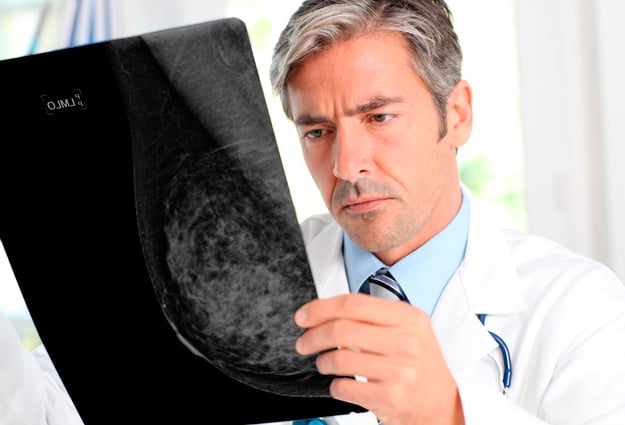
It seems that our society has become one focused on liability and lawsuits in recent years - even the President of the United States was sued within the last couple of months. Unfortunately, this is a trend that couldn't be more true than in the world of radiology.
Radiologists have an extremely important, yet incredibly difficult job by having to interpret x-ray images and determine without a shadow of a doubt that a patient has cancer or doesn't. They can deliver wonderful news or life-altering information, but either way they want to, and need to be 100-percent accurate.
According to Radiology Research and Practice, the most common cause for malpractice suits brought against radiologists in the United States was due to an error in diagnosis, with imaging findings related to the breast as the most common cause of organ-related misdiagnosis.
We've all heard the statistics that 1 in 8 women will be diagnosed with invasive breast cancer over the course of her lifetime. This means that about 12% of the time a radiologist will, or should find cancer on an image, and with the pressures of increasing throughput and speeding up the reading process to deliver same-day results, radiologists are strapped to the max viewing image, after image, after image - rinse and repeat.
However, at the end of the day even radiologists are human.
So what is the best way to reduce the risk of possibly being sued for an incorrect diagnosis? Two guidelines for best practices, according to Radiology Research and Practice include:
- Follow as long as possible the standard of care.
- Improve communication skills with colleagues, nurses, technicians and overall, patients.
When it comes to the standard of care in a hospital group or healthcare system, it should be streamlined across the board. If it wasn't, it would be as chaotic as if one town's stoplight had red, yellow, and green lights and the next town over had blue, orange, and purple - how would anyone know what each color meant if it wasn't the "standard?"
Same can be said for communication. If a radiologist at Hospital A reads a mammogram image where a palpable mass is marked with a triangle, the technologist who put that skin marker on the patient knows that is her way to communicate to the radiologist that there is a palpable mass in that area.
If this same technologist goes to Hospital B and marks another palpable mass with a triangle, what happens if that hospital isn't following the same protocol when it comes to standard of care? That can lead to a communication breakdown and possibly incorrect information being perceived or delivered, which especially, as mentioned above, in breast imaging can be problematic.
According to the ACR Practice Guideline for the Performance of Screening and Diagnostic Mammography, under the section "Markers" it states, "Markers may be used to identify areas of clinical concern or for other situations that could impact an appropriate interpretation (e.g., raised skin lesions, palpable findings, postsurgical changes). The facility should adopt a policy requiring consistent use of two different shapes of radiopaque devices for palpable and skin lesions, respectively."
Breast Centers and mammography departments alike all strive to become an ACR Breast Center of Excellence, so maybe it's time to streamline the standard of care and improve communication in order to achieve not only that goal, but to also give radiologists the opportunity to bring their "A" game for each and every patient.

Sarah Gomes
Account Manager
